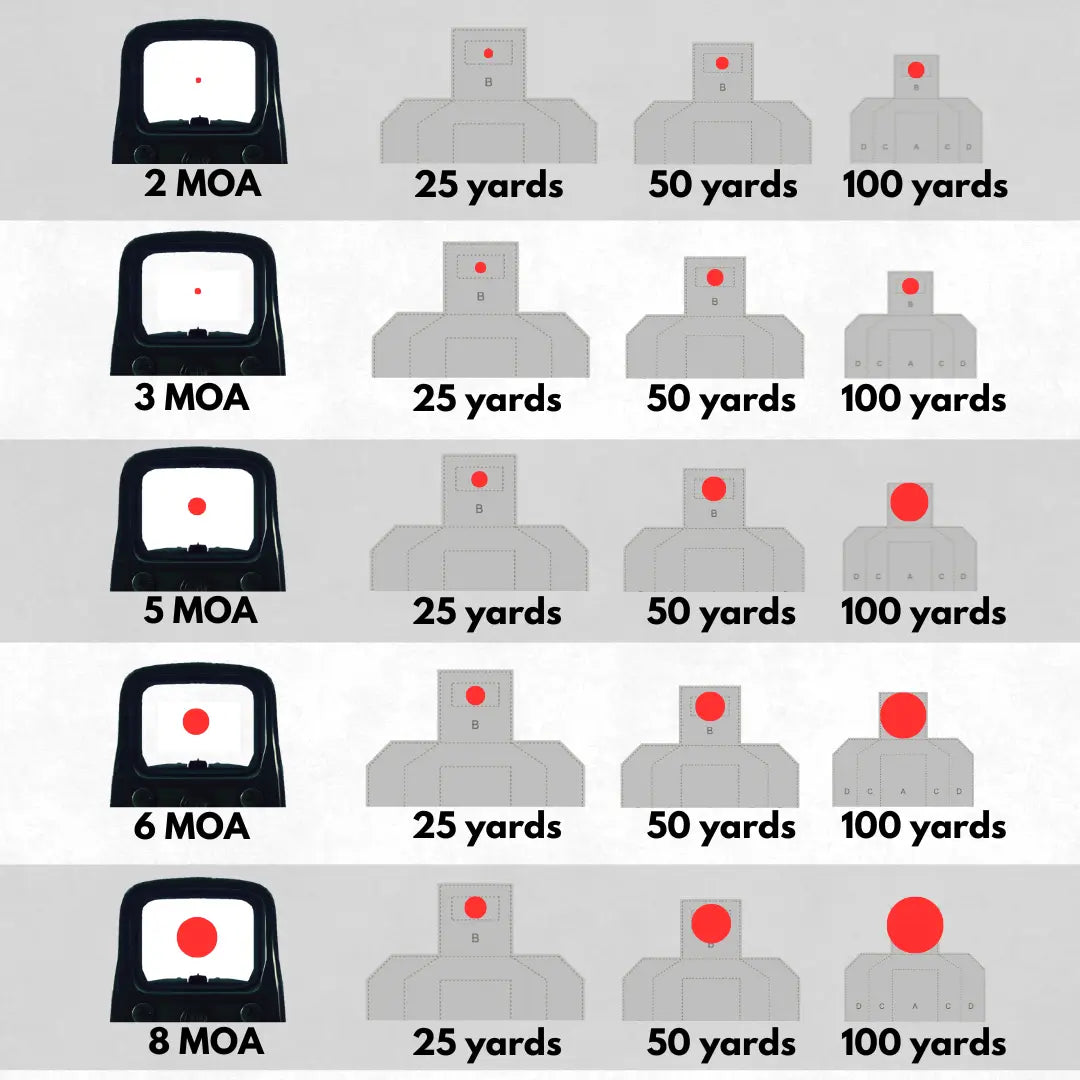How to Choose Best Red Dot Sights for Faster Target Acquisition & Precision Shooting
Share
How to Choose the Best Red Dot Sight for You?
A Guide for Hunters and Range Shooters
By MCJ Optics
When choosing a red dot sight, one of the most overlooked—but most critical—decisions is MOA size. MOA stands for “Minute of Angle,” and it determines the size of the dot in your optic. The right MOA can improve your target acquisition speed, accuracy, and situational performance—whether you're in the field or on the range.
What Is MOA and Why Does It Matter?
MOA refers to how large the dot appears on your target. One MOA equals about 1 inch at 100 yards. So a 2 MOA dot covers 2 inches at 100 yards, while an 8 MOA dot covers 8 inches. Choosing the right dot size comes down to how you shoot—and what you shoot at.
Choosing the Right MOA: Pros and Cons

2 MOA
- Pros: Exceptional precision at longer distances. Great for slow, aimed fire and target shooting.
- Cons: Can be harder to spot quickly in bright light or during fast shooting scenarios.
- Best For: Long-range accuracy, benchrest shooting, and precision hunting applications.
3 MOA
- Pros: Balanced dot size. Small enough for accuracy but large enough for quick target acquisition.
- Cons: Slightly less visible in extreme low-light or fast-moving conditions compared to larger MOAs.
- Best For: Versatile use—ideal for hunting and range shooting alike.
5 MOA
- Pros: Fast target acquisition and easier to see in bright daylight or fast-action environments.
- Cons: Covers more of the target, reducing pinpoint precision at longer distances.
- Best For: Short to mid-range shooting, dynamic drills, or fast-paced range sessions.
6 MOA
- Pros: Bright, bold dot for ultra-fast shots. Great in low-light or for shooters with aging eyes.
- Cons: Obscures smaller targets at distance. Less effective for precision shooting.
- Best For: Close-range hunting scenarios, speed drills, and indoor shooting ranges.
8 MOA
- Pros: Extremely fast sight picture. Best visibility under pressure or stressful shooting environments.
- Cons: High coverage on target makes it unsuitable for precision shots or longer distances.
- Best For: Rapid fire, close-quarters target engagement, and new shooters needing a bold dot.
Still Not Sure? Think About These Scenarios
- Hunting? Choose 2 or 3 MOA for precision when you're targeting game from 50 to 150 yards.
- Range Shooting or Drills? Go with 5 or 6 MOA for quick transitions and fast target tracking.
- New to Red Dots? Start with 3 or 5 MOA—both offer flexibility without major trade-offs.
Expert Tip from MCJ Optics
When in doubt, go with a 3 MOA—it’s the most versatile dot size for hunting, sport shooting, and casual range days.
Final Thoughts
MOA size isn’t just a number—it’s a strategic decision that affects how you shoot. Whether you're a hunter aiming for ethical shots or a competitive shooter shaving seconds off your time, the right red dot MOA gives you an edge.
Ready to upgrade your optic? Check out our full line of red dot sights tailored for performance, durability, and precision at mcjoptics.com.
